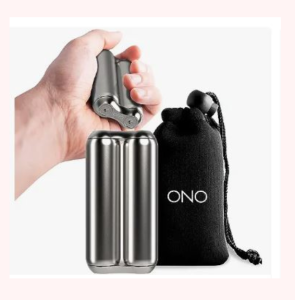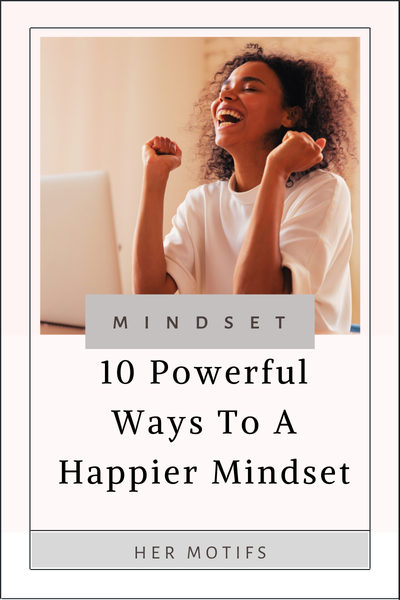10 Different Types of Anxiety and Symptoms
 There are different types of anxiety and anxiety is a complex and pervasive mental health condition that affects millions of people worldwide.
There are different types of anxiety and anxiety is a complex and pervasive mental health condition that affects millions of people worldwide.
It manifests in various forms, each with its unique characteristics and challenges.
Understanding the different types of anxiety can help individuals, as well as their loved ones and healthcare professionals, recognize and address specific anxiety-related concerns more effectively.
By increasing our knowledge about these different anxiety disorders, we can promote awareness, reduce stigma, and encourage early intervention and appropriate support for those experiencing anxiety.
Anxiety is a complex and multifaceted condition that can manifest in various forms, each with its unique set of symptoms. Disorder brings about sudden, intense episodes of panic and physical symptoms such as palpitations, shortness of breath, and a fear of losing control. Specific Phobias entail an irrational and intense fear of a particular object or situation, resulting in panic attacks when confronted with it. In this article, we will explore 10 different types of anxiety, ranging from generalized anxiety disorder to specific phobias, and provide an overview of their symptoms and features. .
.
Table of Contents
Tools to Overcome Anxiety
.
 Fidget Finger Toy
Fidget Finger Toy
Foldable Infinity Cube is composed of eight small cubes
- Great for stress and anxiety relief
- Durable sensory gift
- Each cube can be rotated from any direction and angle
- Hold in one hand and make in any shape you like
.
 Handheld Fidget Toy
Handheld Fidget Toy
This small and compact roller rotates effortlessly in your hand
- Promotes Focus, Clarity
- Compact, Portable Design
- Engages your fingers in full-motion
- Help Relieve Stress, Anxiety, Tension
.
 Anxiety Skills Workbook
Anxiety Skills Workbook
Simple CBT and Mindfulness Strategies for Overcoming Anxiety, Fear, and Worry
- Collection of simple treatment strategies
- Tips and tricks for managing your anxiety and mindfulness
- Helps focus on your own individual anxiety and worry patterns
- Easy to follow cognitive behavioral therapy (CBT) and mindfulness
 Daily Goals Journal
Daily Goals Journal
The book has over 100 Lists to Inspire and Motivate Your Growth and help you progress your goals
- Undated Weekly and Monthly Productivity Planner
- A5 Size Refillable To Beat Procrastination
- Easy to Organize different types of goals and milestones or brain dumb activities
1. Generalized Anxiety Disorder (GAD)
GAD involves excessive worry and fear about everyday situations. People with GAD often find it challenging to control their worries and may experience physical symptoms such as restlessness, fatigue, and difficulty concentrating. Individuals with GAD often find it challenging to control their worry, and it tends to be out of proportion to the actual circumstances. Below are some examples
- Excessive Worry: Individuals with GAD experience a constant and uncontrollable sense of worry and apprehension. This worry often extends beyond specific situations or events and can be related to a wide range of everyday concerns.
- Restlessness and Irritability: People with GAD may feel restless or on edge, finding it difficult to relax. They may also experience irritability or a heightened state of tension, which can affect their interactions with others.
- Physical Symptoms: GAD can manifest through various physical symptoms, including muscle tension, headaches, fatigue, difficulty sleeping, and gastrointestinal problems like stomachaches or digestive issues.
.
2. Panic Disorder
Panic disorder is characterized by recurring panic attacks, which are intense periods of fear or discomfort. These attacks can be accompanied by physical symptoms like rapid heart rate, shortness of breath, and chest pain. Panic Disorder is a type of anxiety disorder characterized by recurring and unexpected panic attacks. These attacks are intense episodes of fear or discomfort that reach a peak within minutes, accompanied by various physical and cognitive symptoms.
- Sweating or trembling
- Chest pain or discomfort
- Heart palpitations or racing heartbeat
- Shortness of breath or feeling like you’re choking
.
3. Social Anxiety Disorder
Social anxiety disorder involves an intense fear of social situations and a strong desire to avoid them. Individuals with social anxiety often fear judgment, embarrassment, or humiliation in social interactions.
- Fear of Being Judged: Individuals with Social Anxiety Disorder have an overwhelming fear of being judged, criticized, or embarrassed in social settings. They may worry excessively about saying or doing something wrong and fear being humiliated or ridiculed by others.
- Avoidance of Social Situations: People with Social Anxiety Disorder often go to great lengths to avoid social situations that trigger their anxiety. They may avoid parties, public speaking engagements, or even everyday interactions like making phone calls or eating in public.
- Physical Symptoms: Social Anxiety Disorder can cause a range of physical symptoms, including rapid heartbeat, sweating, trembling, blushing, and nausea. These symptoms can be distressing and may further contribute to the person’s fear and avoidance of social situations.
.
4. Specific Phobias
Specific Phobias can vary in severity, and they can significantly impact an individual’s quality of life. Specific phobias are characterized by intense and irrational fears of specific objects or situations. Common phobias include heights, spiders, flying, and needles.
- Extreme Fear and Anxiety: Individuals with Specific Phobias experience intense fear and anxiety when exposed to the specific object or situation that triggers their phobia. This fear is excessive and disproportionate to the actual danger posed by the object or situation.
- Avoidance Behavior: People with Specific Phobias often go to great lengths to avoid the object or situation that triggers their fear. For example, someone with a specific phobia of spiders may avoid going to certain places or taking part in activities where they might encounter spiders.
- Distress and Impairment: Specific Phobias can cause significant distress and impairment in daily life. The fear and avoidance behaviors associated with the phobia can interfere with work, school, relationships, and other aspects of a person’s life.
.
5. Obsessive-Compulsive Disorder (OCD)
OCD is characterized by intrusive thoughts or obsessions and repetitive behaviors or compulsions. People with OCD often feel compelled to perform certain rituals or behaviors to alleviate anxiety.
- Immediate Fear Response: When faced with the specific phobic object or situation, individuals with Specific Phobias experience an immediate and overwhelming fear response. This fear is excessive and goes beyond what is considered normal or proportionate.
- Avoidance Behavior: People with Specific Phobias tend to go to great lengths to avoid the object or situation that triggers their fear. They may go out of their way to avoid encounters or take extreme measures to prevent exposure to the phobic trigger.
- Physical Symptoms: Specific Phobias can elicit various physical symptoms, including rapid heartbeat, sweating, trembling, shortness of breath, nausea, and a sense of impending doom. These physical manifestations are the body’s response to the perceived threat.
- Interference with Daily Life: Specific Phobias can significantly impact a person’s daily life, relationships, and overall well-being. The fear and avoidance behaviors associated with the phobia can restrict one’s ability to engage in normal activities, pursue hobbies, or even maintain social connections.
.
6. Post-Traumatic Stress Disorder (PTSD)
PTSD occurs after experiencing or witnessing a traumatic event. Individuals with PTSD may experience intrusive memories, nightmares, flashbacks, and heightened anxiety or fear.
- Intrusive Memories: Individuals with PTSD may experience recurring, distressing memories of the traumatic event. These memories can take the form of intrusive thoughts, nightmares, or flashbacks, causing the person to relive the traumatic experience.
- Hyperarousal and Hypervigilance: Individuals with PTSD may feel constantly on edge, hypervigilant, and easily startled. They may experience difficulty sleeping, irritability, and have an exaggerated startle response. These symptoms can make it challenging to relax and concentrate.
- Emotional and Cognitive Changes: PTSD can cause significant changes in emotions and thinking patterns. This may include feelings of guilt, shame, or anger related to the traumatic event. People with PTSD may also have negative beliefs about themselves, others, or the world.
.
7. Separation Anxiety Disorder
Separation anxiety disorder is commonly seen in children and involves excessive fear or distress when separated from a primary attachment figure, such as a parent or caregiver.
- Fear of Separation-Related Events: People with Separation Anxiety Disorder may exhibit an intense fear of events that could lead to separation, such as going to school, being away from home, or sleeping alone. They may express significant resistance or refusal to engage in activities that could result in separation.
- Physical Symptoms: Separation Anxiety Disorder can cause various physical symptoms, including headaches, stomachaches, nausea, and even panic attacks. These symptoms often occur in anticipation of or during separation from attachment figures.
- Clinging and Seeking Reassurance: Individuals with Separation Anxiety Disorder may exhibit clingy behavior and constantly seek reassurance from their attachment figures. They may constantly check on the whereabouts of their attachment figures or express persistent worry about their safety.
.
8. Agoraphobia
Agoraphobia is a fear of being in situations or places where escape might be difficult or embarrassing. People with agoraphobia often avoid crowded spaces or places outside their comfort zone.
- Fear of Public or Crowded Places: Individuals with Agoraphobia often experience an intense fear of being in public or crowded places. They may avoid situations such as shopping malls, theaters, public transportation, or large gatherings due to the fear of not being able to escape or find help if needed.
- Avoidance Behavior: Agoraphobia leads to avoidance of certain places or situations. People with this disorder may limit their activities and restrict their daily lives to familiar and safe environments, such as staying at home or only going out with a trusted companion.
- Anxiety or Panic Attacks: Agoraphobia can be accompanied by recurring anxiety or panic attacks when facing feared situations. Symptoms may include rapid heartbeat, shortness of breath, sweating, trembling, chest pain, dizziness, or a sense of impending doom. These attacks can further reinforce the fear and avoidance behaviors.
- Dependency on Safety Measures: Individuals with Agoraphobia often rely on safety measures to cope with their fear, such as carrying a cell phone for reassurance, having a trusted companion present, or identifying the location of exits and safe areas in advance.
.
9. Health Anxiety
Health anxiety, also known as illness anxiety disorder or hypochondria, involves excessive worry and fear about having a serious medical condition. Individuals with health anxiety often misinterpret bodily sensations as signs of a severe illness.
- Excessive Worry about Health: Individuals with Health Anxiety have persistent and intrusive thoughts about having a serious illness or disease. They may frequently research medical conditions, symptoms, and possible causes, seeking reassurance or evidence to support their concerns.
- Doctor Shopping or Frequent Medical Visits: Those with Health Anxiety may engage in excessive doctor visits, seeking multiple medical opinions and undergoing numerous tests or procedures. They may switch healthcare providers frequently in search of confirmation for their health concerns.
- Impairment in Daily Functioning: Health Anxiety can significantly impair a person’s daily functioning and quality of life. The constant worry and preoccupation with health can cause distress, anxiety, and interfere with social, occupational, and personal relationships.
.
10. Performance Anxiety
Performance anxiety occurs in situations where an individual is expected to perform, such as public speaking or performing on stage. It can lead to intense fear, self-doubt, and physical symptoms like trembling and sweating.
- Intense Nervousness: People with performance anxiety often experience intense nervousness or anxiety before or during a performance or evaluation. This can manifest as shaky hands, racing heart, sweating, trembling, or feeling a knot in the stomach. These physical symptoms can be distressing and may impair performance.
- Negative Self-Talk: Individuals with performance anxiety may engage in negative self-talk, doubting their abilities and fearing judgment or failure. They may have thoughts such as “I’m going to mess up” or “Everyone will think I’m incompetent.” These negative thoughts can further increase anxiety and undermine confidence.
- Impaired Performance: Performance anxiety can significantly impact a person’s ability to perform at their best. The fear and anxiety can interfere with concentration, memory, coordination, and overall performance quality. It may lead to mistakes, forgetfulness, or an inability to showcase one’s true abilities.
.
Conclusion
In conclusion, anxiety is a complex and diverse mental health condition that manifests in various forms. Understanding the different types of anxiety and their symptoms is crucial in recognizing and addressing these challenges It’s important to note that while these are distinct types of anxiety, individuals can experience a combination of them or have overlapping symptoms. Consulting a mental health professional is recommended for an accurate diagnosis and appropriate treatment.
.
- 100 Valentine Lovers Questions - February 24, 2025
- 2025 New Year Growth Quotes - February 24, 2025
- 2025 Inspiring Self Love Quotes - February 24, 2025







